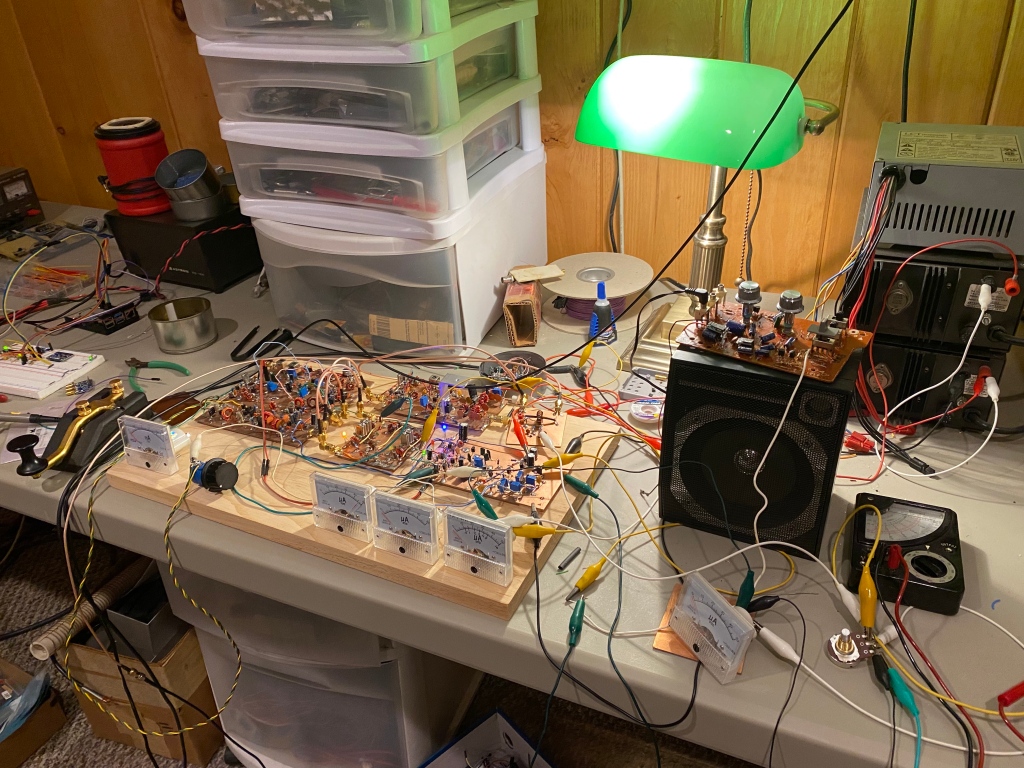 Radio Skinny-Dipping
Radio Skinny-Dipping
I have been working on a homebrew 40 meter CW transceiver for over a year now. It’s a superhet design, with all discrete components built ugly style on copper clad board. I’ve taken various circuit designs I’ve built in the past and added some new ones. The project has been a great opportunity for me to use and learn about the NanoVNA. Every stage I built, tested, and tweaked with the NanoVNA, and recorded results in my lab notebook. The rig features a 4 Mhz IF, mainly due to me having a ton of these crystals. I built wide and narrow filters, just futzing around with various crystal and capacitor combinations, and implemented diode switching of the filters. The filters aren’t commercial grade, but they’re definitely good enough. The final PA uses an IRF510. I had to do several iterations of this before I got something to work. At 12 volts I get 4 or 5 watts, but I normally run it at 24 volts to get 10 watts. I’ve had it up to 36 volts, outputting 20 watts. I’ve been wanting to try 48 volts.
For the longest time the rig was just PC boards on my bench interconnected with alligator clips, but a few months ago I made it a bit more respectable and mounted the PC boards on a pine board and completed some permanent wiring. There are still several alligator clips jumpering things to make it work. I tend to leave the rig on all the time and just listen to it in the background while doing other things in my office/lab/shack. I even leave it on when I’m experimenting with or adding a new circuit, if possible.

I’ve made several contacts here and there when I stumbled upon someone calling CQ for POTA, a contest, or SKCC. I honestly haven’t been doing any logging or any paper code copying. There’s something satisfying about just walking over to the rig, tapping the alligator clip-connected straight key, and having a quick contact. There’s no keyboard, no waterfall, and nothing to navigate with a mouse. It’s just me and a bunch of components communicating over the ether.













On the transmitter with 48 volts, try the IRF610. I have used it at 48 volts with success. The IRF510 won’t handle 48 volts. Also, the IRF610 has less base capacitance.
Thanks for the tip, David! I will get a few IRF610s in my next parts shipment and try it out. I love the simplicity of the FET final. 73
Neat project.